Erzetich Phobos Review – The Goliath of Headphones
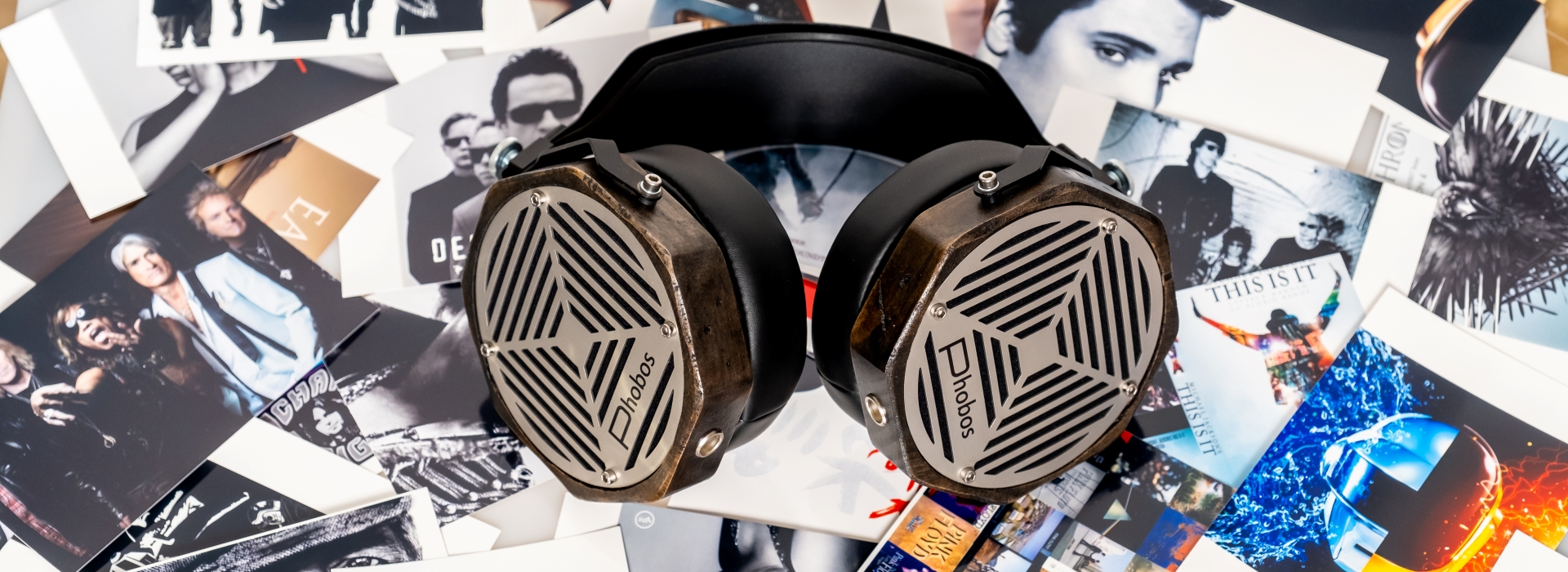
My Video Review:
As my daily morning routine, with a coffee cup near me, I was casually browsing around my usual audiophile press and I stumbled upon this huge headphone with an unusual octagonal cup-shape that dwarfed all other huge-looking headphones around it. It was the mighty Erzetich Phobos that looked scary for some, but peculiar and interesting for me. Big drivers always resulted with a bigger, bolder sound and being curios by nature, I had a new target to pursue and a new quest line to finish. Few months later I was happily grinning with a pair of Phobos on my head.
Phobos, as you might expect is not your usual headphone, this is a 100% hand-built headphone that ditched dynamic-drivers in favor of bigger but harder to drive planar-magnetic ones. I will confess that I am a huge head-fi listener and when I’m front of my office desk, I’m always wearing a pair of headphones. Quite some time passed since I’ve tested a top-of-the-line headphone with incredible specs, build quality and that has an amazing sound quality attached to it. Phobos is definitely part of this group, it is the flagship headphone of the Slovenian manufacturer, it’s their showpiece and I’m quite sure it has something to say.
Erzetich Audio is not new to me, I already reviewed their small and cute, but really mean headphone amp called Bacillus and their newest portable headphones called Thalia that I reviewed not too long ago.
Phobos is the personification of fear in Greek mythology, but it’s also the biggest moon of Mars. Looking closer at it, I think to Blaž Erzetič and to his team, both meanings are representing this particular headphone, its really big and your portable audio devices should crumble in fear at its sight, more about this later.

Unboxing
They came double boxed as all high-quality stuff is coming nowadays. The bigger box is stuffed with styrofoam boards so the smaller product box is well protected, inside it a huge amount of foam will shield away the headphone from damage during shipping. You can never be too careful, right?
The centerpiece is of course the headphone itself, underneath it you will find a certificate of authenticity, an owner’s manual and a cloth pouch for the headphones. Around the headphone you will see the detachable cable that seems to be well made, it’s quite thick and stiffer than my other cables. I would like a hard case instead of the cloth one for traveling, if you need one, I really recommend the Pelican 1300 case for your precious headphone.
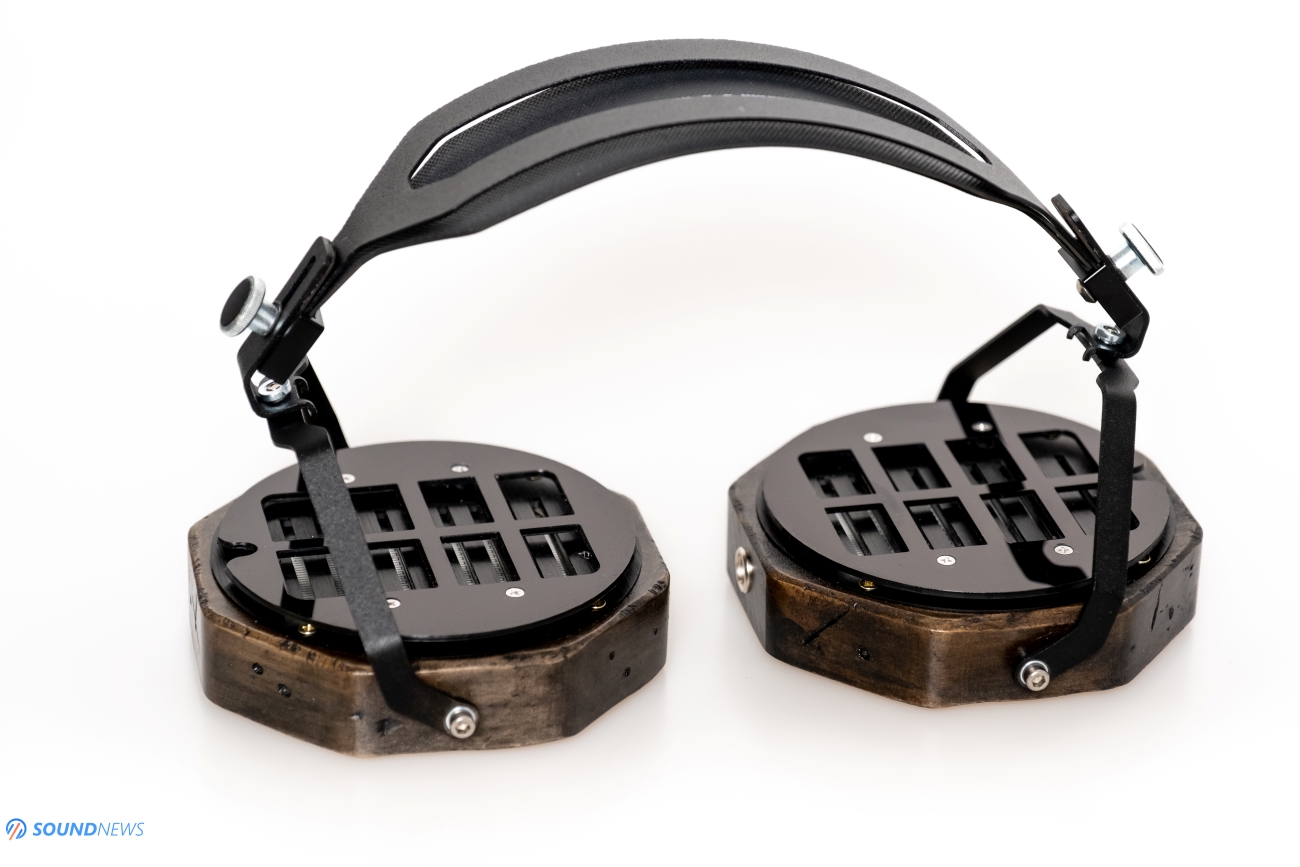
Build Quality & Looks
Erzetich Phobos is a very unique looking headphone and can’t be mistaken for anything else. Its earcups are made out of aged linden wood carved manually in this striking octagonal shape. The wood cups are really large, at about 11.3 cm in diagonal and having a width of 2.5 cm this is the largest earcup design I have ever seen.
Earpads are obviously detachable and are made out of leather free materials (PTU leather). They completely wrap around my big ears and if you have a big head like myself, you shouldn’t worry about the comfort levels with Phobos, it has the right amount of side pressure and the right earpad openings even for elven ears.
Since Phobos is hand made out of aged linden wood, every headphone will have small marks in the wood and if you put two Phobos near each other, they will have different markings at different spots, maybe a different wood texture or color, so every Phobos is quite unique. Phobos has a 100% symmetrical design and any ear-cup can be your left or your right. The channel markings can be spotted only the cable itself, the one with a red tube will be your right earcup. I’m glad that it uses the sturdiest headphone connection that I know – locking type mini-XLR connectors and on the other end the cable is terminated with a 6.35mm (1/4”) jack. There two things that needs to be said about this cable: its really stiff and it’s not bending easily, so it can be a little tricky to work with and it has microphonics if it touches your clothing – you can hear the mechanical rubbing when you are wearing your headphones. In my opinion this is the biggest con of this cable and if it bothers you too much you can exchange it with a better one or you can use your ZMF or your Audeze cable.

The headphone structure is entirely made out of steel and it is reinforced only by nuts and bolts. However, these don’t contain user serviceable components so be gentle with them. The height adjustment mechanism is simple and practical and by default it stays in the middle position. Gently unscrew the metal gear, adjust your size and then screw it back.
Having big drivers, heavy magnets, huge earcups made out of wood and a steel structure it all made a big impact on its weight. This is a heavy headphone, at around 690 grams (about 1.5 pounds) it is heavier than expected but thanks to even distribution of weight and to those fluffy earpads, I actually can wear them for longer periods of time. As a point of reference, I can wear the 730 grams Audeze LCD-4 about half the time because of the big pressure on top of my head. Phobos still doesn’t have HD800 or Arya type of comfort levels, but it’s coming close, so no complaints here.
Phobos is obviously an open-back design that will complete hug your ears. Phobos was made to be used only with desktop headphone amps but it can work with select portables too.

Technology Inside
Phobos uses big planar-magnetic drivers, the manufacturer doesn’t tell a lot about them, only that it has an impedance of 45 Ohms and that it’s fully open. After opening them up (which I do not recommend you do) you can see the huge driver assembly, I measured the driver chassis at about 105-106mm in diagonal, which is huge by my standards.
Armed with a MiniDSP EARS system I could actually compare the sensitivity of my other headphones. Phobos needed 4 dB less in achieving the same 90 dB of volume compared to the Quad ERA-1 and about 9 dB less compared to Hifiman Arya. Since Quad ERA-1 have a sensitivity of 94 dB per 1mW and Hifiman Arya a sensitivity of 90 dB, so I believe that Phobos should have a sensitivity of around ~99 dB per 1mW of power. Not really power hungry, but not easy to drive either.
With that said, I feel that I smashed an old myth that says a bigger driver will need more power to be driven compared to a smaller one, but that seems to not be the case here.
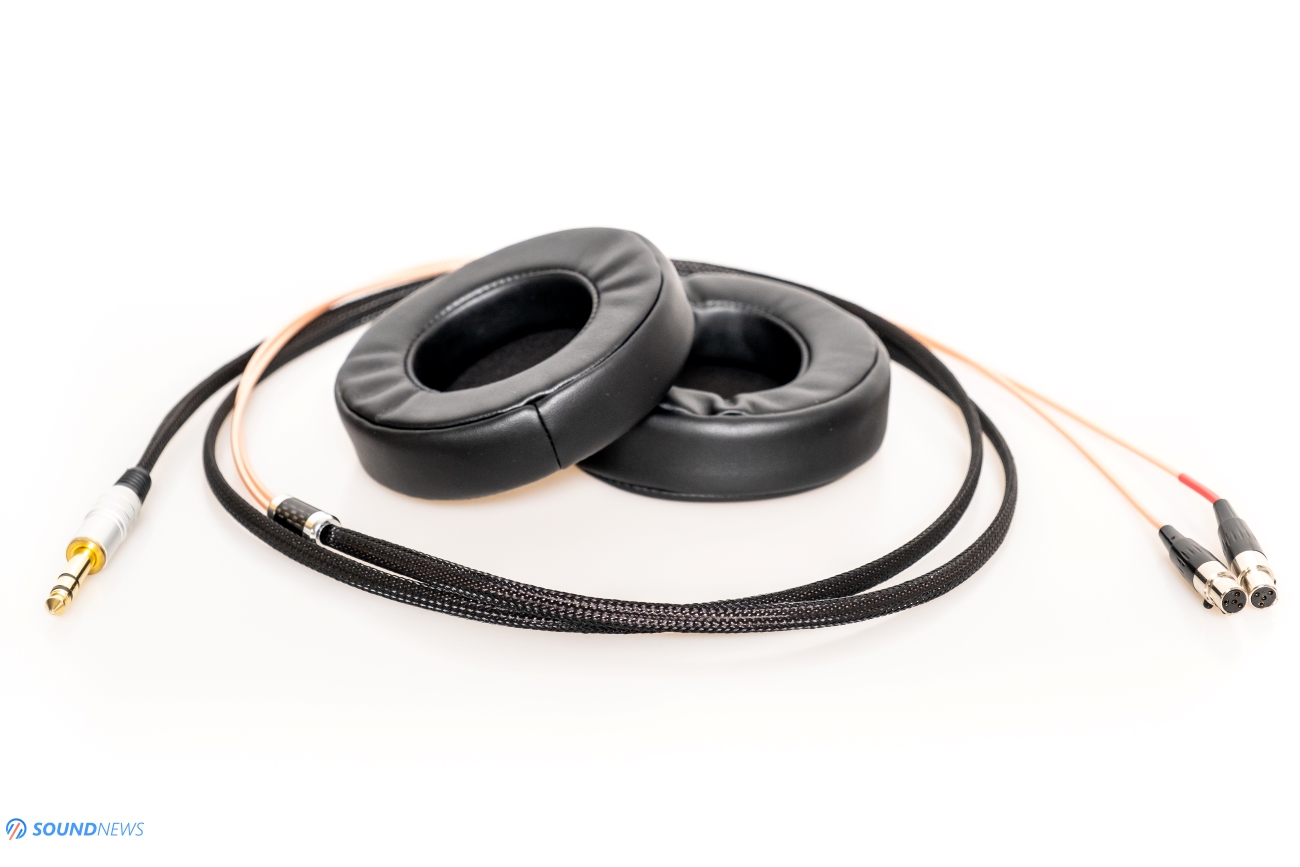
Sound Performance
I. Burn-In Requirements
Before going deep into its performance, I just want to point out that in the owner’s manual it is recommended to do a burn-in of at least 24 hours. In my own experience I would double that number to at least 48 hours. I was very excited when I received them so I started listening to them right away. I felt the potential they might have but the sound was way too stiff, too rounded for my tastes. The sub-bass was nowhere to be found and even the upper-treble too. I left them playing a playlist on repeat for 2 days at medium volume-levels. 48 hours later and it sounded much better, I finally could hear the diaphragm moving freely and much easier, awakening much better dynamics in the process, yet I felt it is still not giving me 100% performance wise. I left them for another two days and listened to them again, this was the moment I felt that I am listening to a high-end pair of headphones where there is a lot to love and little to nothing to dislike.
The immediate feeling I had is that I opened my windows and music rushed in in full-force. From my headphone collection, Phobos has the most layered and the widest sound of them all. ERA-1 and Arya are formidable headphones but they choose a taller stage in detriment of a wider one between the left and the right earcup. Phobos is in many ways the most technical headphone from my rising headphone collection.

II. Power Requirements
At ~99 dB per 1mW of power, simple portable devices should move it decently, right? That’s wrong. The xDuuo Link sounded dead to me with Phobos attached to it, FiiO BTR5 sounded better but that still would not increase my blood pressure and dynamics, too lean and boring for my tastes. Shanling Q1? Decent, but very close performance wise to the BTR5, I have enough volume close to maximum, but dynamics were slow and it would not impress a critical listener.
Only when I moved to FiiO M11 Pro I felt more energy, a much better impact, a better control, better speed and slam. Hell, even sub-bass awakened and I could hear few notes past 16 kHz area. Did they sound close to their maximum potential? Surely no, but respectable and pretty impressive for a portable device.
Moving on to desktop power, I connected them to two of the finest desktop headphone amps: the Kinki Studio THR-1 and the Benchmark HPA-4. Both are very capable headphone amps that could drive literally any headphone to ear bleeding levels with the right settings. THR-1 has two single ended outputs, one mostly made for dynamic headphones (Low output) where it would offer a better voltage swing and another output (High) that will offer a better amperage. I was not surprised to hear Phobos performing absolutely incredible on the latter one. At last, dynamics were up there with the best, slam and impact improved tremendously and finally I could hear a complete sound package. Sound became much deeper, the air around the notes came back, soundstage levels increased a lot with it and finally a pleasing warmth was covering my favorite songs. With HPA4 I had the same feelings, minus the warmth, but an additional layer of information was revealed to me by using it.
If you plan on using the Phobos with a portable device, make sure it has power to spare and it will reward you with explosive dynamics and with a believable soundstage.

III. Sound Signature
My overall impression is that Phobos has a mesmerizing warmth when properly driven, very reminiscent of other planar magnetic headphones, it has not only a tall stage, but also a really deep and wide one that stretches in all directions. It might sound decent with portable devices, but the real control I felt only with proper desktop power. With great sounding headphone amps like THR-1, HPA4 and probably with Erzetich own line of headphone amps like Bacillus Tilia, Perfidus and Deimos, Phobos is literally transforming into something else, air is building up around the music, sub-bass makes its appearance, midrange is suddenly becoming natural, pleasant and rich. The sound becomes fuller, weightier, carries more power and more air with every note. Phobos is a detailed sounding headphone that will reveal a lot of details in your music, combine that with a low THD (total harmonic distortion) and you can listen to music from low to really loud levels without audible distortion.
Phobos is neutral and revealing with just a hint of warmth, it slowly grows on you. I took me time appreciating them, mostly because of the burn-in requirements, but at this moment I understand their flagship status.
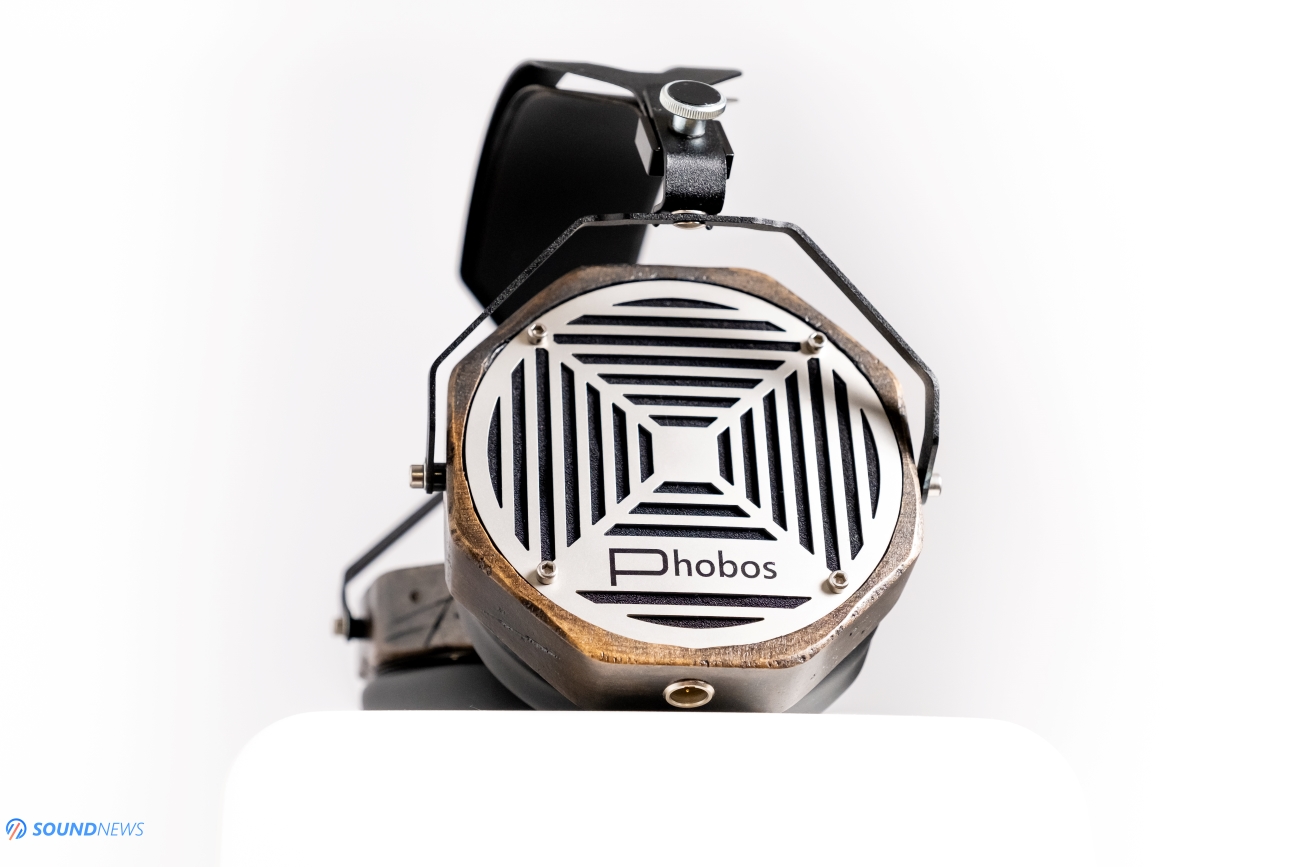
Frequency Response
IV. Bass
Being a planar headphone, Phobos have an impressive low end, going not only deep but also sounding incredible clean, having a very low distortion in the bass. I focused mostly on electronic music and some rock tunes where the bass guitar stands out. Most of the time Phobos provided a great amount of bass texture, a fine extension and a meaty and pleasant rumble, it’s a planar, so it shouldn’t be a surprise for anyone. There were only very few occasions where I’d wish it would gone deeper in the sub-bass department. I believe that up to 50 Hz there is a slow and gentle build-up in the bass. Some particular songs that have information down to 20 Hz had a lesser impact on me and didn’t rumble as much as I would love to happen. As a point of comparison, Hifiman Arya is doing the same to me and only Quad ERA-1 had more low-end with more rumble down there. In the same time Phobos and Arya have a much cleaner and more precise sound to them and ERA-1 is mostly just fun and engaging, without being too technical.
Moving on to mid-bass, I feel that Phobos starts showing off all its best traits. Mid-bass has a slight elevation that enhanced a lot my mood level. I am listening to them mostly with a smile on my face and toe tapping my feet. In terms in mid-bass performance it has the best traits a headphone should have: its really layered, spread-out, detailed, I feel it breathing and having a great control with the right equipment.

V. Midrange
The midrange, Ah! The pleasant planar midrange, is there anything better than this in terms of midrange? I’m a midrange addict and Phobos is exceptionally good in this department. I particularly like that female voices have the right pitch and that male voices are rendered completely different. The difference in tonality is easily spotted and in a crowded soprano I can easily identify the location of those voices and their tonality. While listening to Phobos there is a thing that always grabs my attention: a fullness is always present, the air mass flying around is heavier somehow and the overall tone is rich and natural. This naturalness is very apparent with few planars and Phobos is part of this group. Phobos sometimes reminds me of the Audeze sound signature but without the excessive bloom and forwardness in the midrange. It’s not thrown into my face, but more like spread around me, so I can easier focus on all those notes.

VI. Treble
Moving on to the treble, I will say from the start that there is a gentle roll-off and the usual frequency range that can be offensive to the listener (from 4 to 6 kHz) is toned down and tamed a bit. Brightness is not a word I will ever assume to this headphone; you hear that information but it’s not calling for your attention. Going past that region and everything gets back to normal. Bells and cymbal crashes have a crispy, metallic nature, exactly how they should. Being a fast-moving driver, the double drums will not pose a problem for them and Phobos will keep up with the fastest and most demanding music. I personally like this kind of approach of treble reproduction and thanks to that gentle roll-off, I can listen to my tunes without any awareness from my part. I can listen to low intensity music or I can listen really loud tunes without posing a potential issue.

VII. Transient Response
Phobos is really close to what I would call a transient monster. Out of my headphone stable it is the fastest one when properly amped. It can sound the other way around with a weak power source like I experienced with portable devices. Give it plenty of amperage and some juicy watts and it will start playing tricks with you. Phobos is fast, articulate and knows to increase or decrease those dynamics in an instant. Pace, rhythm and timing are its second names and Phobos is not really shy in showing that off. It’s always agile, nimble, but only in the right setup. It’s important highlighting this aspect, as I expect it will sound slower and gentler with a tube-based amplifier. I will soon measure its decay, but I presume it’s on the faster and snappier side compared with dynamic headphones and even to some planars.

VIII. Soundstage & Depth
That huge driver assembly and that really big planar magnetic pattern made a big impact in the soundstage department. As of right now this is the airiest sounding headphone that that I have around me. It’s still not on the same level with HD800/HD800S but it doesn’t really need to. HD800 already sounded disjointed and a bit fake to me, losing raw energy in the process due to that excessively large stage. Note placement around me is excellent and can easily pick any note I want from a crowded passage. Phobos knows how to throw a believable stage that breathes, that I can walk by and be surrounded by music. Stage goes past my shoulder levels and it is a taller one as well. Depth is great and I can appreciate the distance between me and a particular instrument. Stage is always centered, so I am pretty sure the driver matching is good. I am not hearing my notes hitting an imaginary wall while listening to Hi-Res Mozart, Bach and Vivaldi, so the decay of the notes is changing depending on the music.
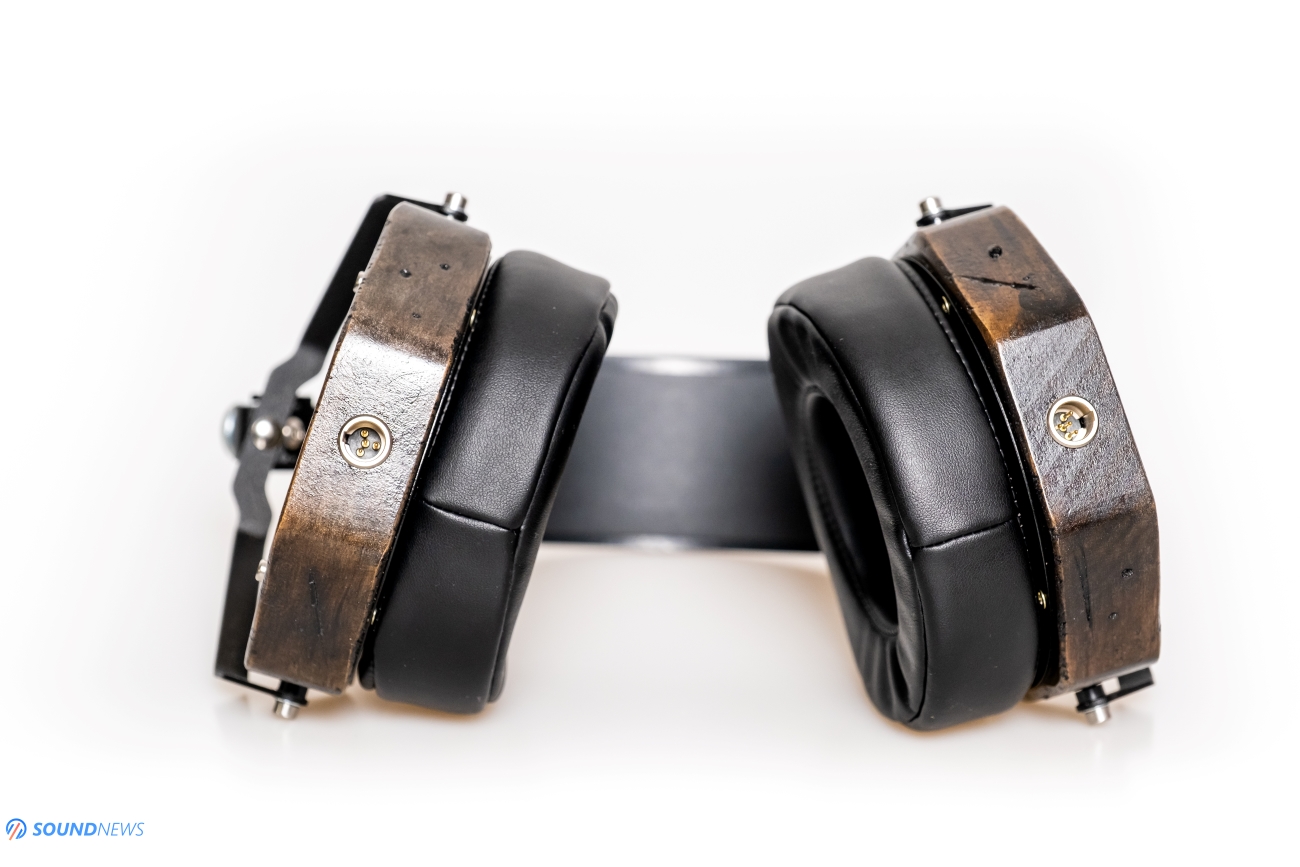
IX. Detail Retrieval
This is where it gets super interesting. Even the manufacturer itself is calling it: “Analytically detailed, firm and balanced” and I do agree with this short description. Phobos is indeed clear sounding, thanks a super low THD, every note will have a clearer outline and shape. Phobos possesses a good detail retrieval and can render even tiny movements in the recording studio, like somebody moving a foot or a car passing by the recording studio. The only range where there will be less pronounced details is in the 4 to 6 kHz range. Phobos is a detailed sounding headphone and it easily surpassed the Quad Era-1 and throws punched with the Hifiman Arya as both are really clean sounding headphones. Arya is sometimes just too serious (read it as too linear) sounding but Phobos can lift my mood with a fuller sound and more enjoyable presentation.

X. Measurements
After giving my full subjective opinion, I think its time putting them under a magnifying glass. I am curious mostly about their FR, THD, but also about its decay and waterfall. When it comes to measurements, I trust a single headphone amp to do this job: the ultra-linear Benchmark HPA4. The source was my trusty Matrix Audio Element X and the measurement rig was the MiniDSP E.A.R.S. system.
I used mostly the Original Headphone Compensation (HPN) files for this particular EARS serial number, because I feel that Compensation For Flat EQ (HEQ) files are not very representative. EARS system has some huge silicon ears but that wasn’t a problem for those huge earpads of Phobos. Since it is a fully open-back headphone I tested them in a sealed room and I redid all my tests more than 10 times.

Checking their RAW measurements without applying a smoothing (like how manufacturers are cleverly doing) shown an impressive drive matching between the right and left driver. There is very little deviation and only in the treble region. As I expected, the bass and midrange area are really good. Both have a clean and straight line, without drops or rises. Phobos is full, natural and life like sounding because it possesses a great bass and midrange level. The sub-bass is just gently rolled off up to 50 Hz, it’s still there, still can be heard in my songs, just has a lower energy and impact on me. You can spot a roll-off in the 4 kHz and then in the 6 kHz area that created that easy going and free of any brightness feeling. Some might like that, some might not, I think it’s fine considering the whole purpose of this headphone and of its designer. Upper treble is really good and it goes amazingly well even past 20 kHz.

Applying a gentle 1/12 smoothing resulted in a graph that didn’t change a lot, now you can better see the driver matching between L and R and the slight roll-off in the treble region.
All in all, Phobos has a nice frequency response and little to nothing to complain about. I have a theory that the slight drop in the sub-bass can be solved with a better earpad that will provide a better seal to the outside world. I will test this claim later on and will redo my measurements.

THD (total harmonic distortion) is much better compared to dynamics headphones and it seems to have a very respectable distortion even down to the lowest octaves. The rest stays somewhere between 0.1 and 0.2% of distortion which is insignificant.
Its spectral decay is showing that the diaphragm is moving at the right speed and nothing remains behind.


Spectrogram and waterfall readings will show all the hot zones and as I expected the mid-bass and midrange is where all the magic is happening. Mid and upper treble are extended and seems to be quicker sounding comparing to sub-bass for example.
I don’t consider the drops to be significant or bothersome, I’m actually enjoying this type of relaxed approach to low and mid-treble presentation and for a longer listening sessions Phobos are really good.

Overall, Phobos has a super low THD, an extended FR even past 20 kHz and a right decay over the whole driver surface. So far, Phobos actually had the lowest THD I ever recorded, even lower than that of Arya, ERA-1, even much lower than that of Hifiman JADE II Electrostatic headphone system, I’m impressed!

XI. A Comparison
From my stable only Hifiman Arya can stand a chance versus the mighty Phobos so here’s nothing.
Erzetich Phobos (2000 EUR) VS Hifiman Arya (1600 USD)
Arya is considerably lighter; it is more comfortable too but it falls short when it comes to build quality. The earcups are made out of plastic, the headphone structure is thin and they are not really screaming sturdy construction or high-end materials. I personally like their looks and their overall package, I just wish it didn’t have plastic parts and that the paint wouldn’t scratch so easily from normal use as they are doing.
Arya is considerably harder to drive, needs about 6dB more to achieve the same SPL. It has a smaller headphone driver but a taller one and, in the process, offers a taller soundstage that doesn’t impress a lot when it comes to width. Arya is super linear and extended in the FR, has low THD but not as low as Phobos and will work only with desktop headphone amps. Arya is sometimes lean sounding and a bit boring sounding too. Arya has very little shortcomings but the biggest one is the gentle roll-off in the upper treble that masks a bit the top-octave. Depth is good and the stage never passes the shoulder level. Very good performance by my standards.
Phobos is having a bit more meat to the bone, sounds by a hair fuller and more engaging. Speed, decay and control are neck and neck identical and both excel with fast impactful music. Phobos has not only a tall soundstage but also a wide one that goes past my shoulder level. It is considerably wider spread sounding, deeper, more holographic and more 3D sounding.
In terms of FR, Phobos has a roll-off in the lower to mid-treble treble and Arya is rolling-off the upper treble. Both are good and it really depends on the listener.
In terms of detail retrieval Phobos is just a tad more detailed and will reveal a sharper image and outline of every note. Phobos has a lower THD, meaning from low volume to very loud tunes, it will maintain a lower distortion number no matter what.
In the end, Phobos is built from higher quality materials, it is sturdier, feels more premium, more solid in the hand but and it is also more expensive. Sound wise, it will offer a different approach to music reproduction and can be considered a worthy challenger for the Arya.

Conclusion
Erzetich Audio team created a unique looking headphone with an impressive sound signature that should withstand the test of time. Every Phobos is hand built by a small team of passionate music lovers. Phobos will impress anyone will pass by and have a listen, their huge earcups created an open wide sound that delivers great dynamics no matter the song is being played. Just make sure to feed them high-quality desktop amplification and they will reward you back with musical warmth and with an extended frequency response.
As a statement product, Phobos is not cheap and it will cost you 2000 EUR here in Europe or 2300 USD in USA.
I have a surprise for you thought, to make a much sweeter deal for our readers, I partnered with Erzetich Audio team and prepared a 15% OFF discount code that can be used on their official web-store that is available for all their products, not only for Phobos. At check-out please use the “SOUNDNEWS” discount code for a 15% OFF, that’s 300 EUR less for Phobos! This code will expire on February 29th 2020 so act fast.
PROS:
- Impressive build quality, love the hand-crafted steam-punk look!
- Great comfort level once you adjust them properly
- Among the best depth in a planar design
- Great transparency and pin-point imaging
- Among the widest soundstage stretching far away in all directions
- Very airy sounding thanks to huge open-back earcups
- Excellent detail retrieval
- Excellent transient response, with explosive dynamics
- Extended frequency response, there is information even past 20 kHz
- When properly driven if will offer warmth and a huge headroom
CONS:
- The cable stiffness and microphonics should be addressed
- Would like to have a hard case instead of a cloth pouch
ASSOCIATED EQUIPMENT:
- Sources: Xiaomi Mi9T Pro, Corsair One i160
- DACs: Matrix Audio Element X, Topping 90, KECES S3, Burson Conductor 3, xDuoo Link, FiiO BTR5
- DAPs: M11 PRO, Shanling Q1
- Headphone amps: Benchmark HPA4, Kinki Studio THR-1
- Full-sized headphones: Erzetich Phobos, Hifiman Arya, Quad ERA-1, Sennheiser HD660S
- Portable headphones: Sennheiser Momentum 2, Momentum 3, Meze 99 Classics
- IEMs: FiiO FH7, Simgot EN700 PRO
- Loudspeakers: KEF LS50W
- Interconnects: QED Reference XLR, Aune AL3 XLR
- Power Cables: Isotek EVO3 Premier (x2)
- Balanced Power Conditioners: PLiXiR Elite BAC 400, KECES BP-600







